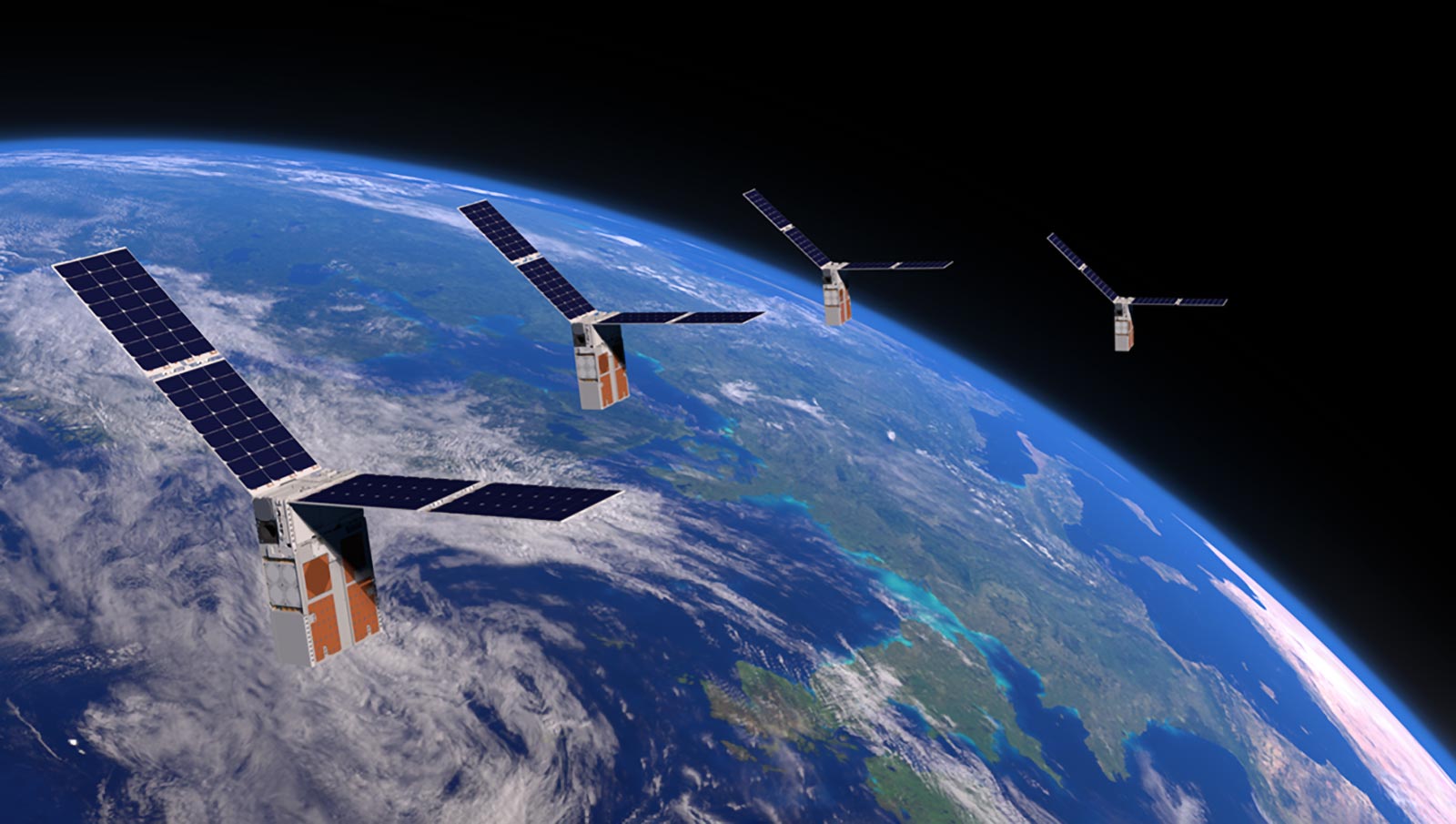Gp Capt Arvind Pandey (Retd)
Four 6U CubeSats were launched into Earth’s orbit by NASA in July 2023. The “Starling” mission, which will last at least six months, will test the satellites’ ability to work together autonomously without receiving real-time updates from mission management.
Each satellite is spaced roughly 40 miles apart, positioned at about 355 miles above Earth. A category of nanosatellites known as CubeSats uses standardized dimensions and form factors. The “one unit” or “1U” used in the basic CubeSat size is 10x10x10 cm in size, although it can be expanded to larger sizes, including 1.5, 2, 3, 6, and even 12U.
CubeSats were created in 1999 by Stanford University and California Polytechnic State University at San Luis Obispo (Cal Poly) to serve as a learning and space exploration platform. Using constellations, swarms, and disaggregated systems, CubeSats today offers an affordable platform for scientific research, innovative technology demonstrations, and advanced mission concepts.
The Starling mission aims to investigate significant technological advancements for the subsequent deep space missions, where complex and autonomous spacecraft will be essential.
The Pac-Man
The CubeSats, nicknamed Blinky, Pinky, Inky, and Clyde, will operate in two different formations while testing various technologies enabling satellite swarms to work together cooperatively in deep space.
The ghosts from the popular arcade game “Pac-Man,” first made available by Namco in 1980, are referenced by the names Blinky, Pinky, Inky, and Clyde. These four figures act as Pac-Man’s pursuers in the game as he moves around the maze munching dots and dodging obstacles. Every ghost has its personality, which influences how it pursues Pac-Man.
Scientific Advantages Of Swarm Technologies
Swarm technologies make it possible to collect data from different locations in space, create networks that can patch themselves if a component fails, and develop spacecraft systems that can react to environmental changes without communicating with Earth.

As each spacecraft is redundant to the others, a swarm of spacecraft is also more resistant to failures or malfunctions within the team. The others can step in to fill in if one fails. Starling will test four main capabilities: autonomous maneuvering to stay together as a group; flexible communications network among the spacecraft; tracking each other’s relative positions; and autonomous activity execution in response to new information from onboard sensors.
Starling is looking to create a swarm of small satellites that can function as an autonomous community capable of responding to their environment and completing tasks as a team.
Teaming up these satellites with SpaceX’s Starlink satellite internet constellation is one of the secondary goals. The largest satellite constellation in the world, known as Starlink, consists of thousands of small satellites that operate in low Earth orbit (LEO) to offer a global internet connection.
NASA and SpaceX will exchange information about upcoming trajectories to see if various organizations can securely coordinate activities. This development, part of a larger space traffic management program, occurs as several other huge satellite constellations, including one created by the Amazon subsidiary Kuiper, are prepared to blast off into orbit. The Starlink-compatible section of the mission is known as Starling 1.5.
Starling Mission Composition
A manufacturer of small satellites and a mission services provider, Blue Canyon Technologies (BCT) provides a broad range of spacecraft and components for various missions in the new space economy. BCT managed NASA’s Ames Research Center for the Space Technology Mission Directorate and provided four 6U CubeSats to the Small Spacecraft Technology program.
NASA’s Artemis program, which aims to send people back to the Moon by 2024, will use a very innovative small spacecraft called CubeSats. Small spacecraft can be effective tools for space exploration thanks to developments in consumer electronics and miniaturized sensors.
According to NASA’s Space Technology Mission Directorate’s program executive for small spacecraft technology, Christopher Baker, “Part of it has been the availability of commercial, off-the-shelf components that have incredible processing power.”
The launch was undertaken by Rocket Lab’s Electron Rocket, and the company successfully retrieved the first stage of its Electron rocket during its “Baby Come Back” mission from New Zealand’s Mahia Peninsula.

About two and a half minutes later, its first stage separated and splashed into the Pacific Ocean, where Rocket Lab’s team could recover the reusable booster. Following separation, the booster started to fall toward Earth at a speed of over 9,000 kph (5,592 mph), reaching a temperature of 2,400 °C (4,352 °F) along the way.
About eight minutes after launch, the rocket’s main parachute opened, allowing it to splash into the water safely. Rocket Lab then brought the rocket onto a vessel “using a specially designed capture cradle.” In the future, Rocket Lab wants to use its boosters on new missions. One of the many space companies working to perfect a method of reusing rocket boosters is Rocket Lab, which should allow for more sustainable and viable space exploration.
Possibilities For Deep Space Exploration And Scientific Research
New avenues for space exploration and scholarly investigation will open up with the successful completion of the Starling mission. It exemplifies NASA’s dedication to advancing cosmic understanding through creative and collaborative robotic missions. Additionally, the mission represents a significant advancement in our comprehension of space traffic management regulations.
The “Starling” mission from NASA and SpaceX marks a significant advancement in testing autonomous cooperation and collision avoidance technologies in space. NASA wants to improve the effectiveness and security of upcoming deep space missions by using swarm technologies and autonomous capabilities.
These technologies have the potential to revolutionize space exploration, advance scientific research, and pave the way for cutting-edge space traffic management strategies.
- Group Captain Arvind Pandey(Retd) is a geospatial intelligence professional. He is trained in the full spectrum of imagery analysis in aerial and space-borne sensors and has vast experience creating geospatial infrastructure.
- Reach out to the author at arvind.pandey65@outlook.com
- Follow EurAsian Times on Google News




